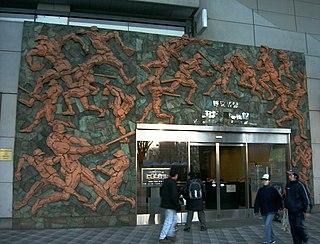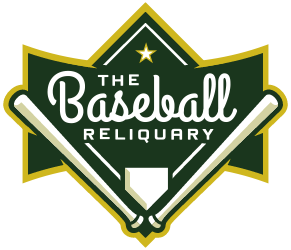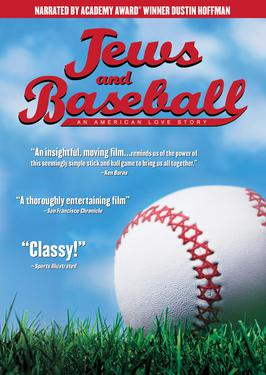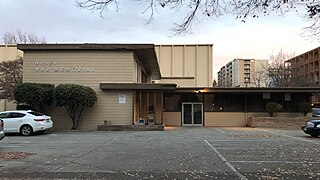The Nisei Baseball Research Project (NBRP) is a non-profit 501(c)(3) organization documenting, preserving and exhibiting history of Japanese American baseball. It was founded by Kerry Yo Nakagawa, the author of Through a Diamond: 100 Years of Japanese American Baseball. The NBRP's mission is to bring awareness and education about Japanese American Concentration Camps during World War II, through the prism of their multimedia projects and baseball. Also to recognize the many prewar Issei and Nisei ballplayers that never got an opportunity to play in Major League Baseball because of the 'color line' and their contribution as our American Baseball Ambassadors in the early 1920s and 1930s in Japan, Korea and Manchukuo, China. These ballplayers also kept the All-American Pastime alive during their incarceration during World War II as they played 'behind barbed wire' and again were denied of professional MLB careers.
The project began on May 4, 1996, at the Fresno Museum as the first exhibit to display the photos, memorabilia, artifacts, and text history of the Nikkei in baseball. The exhibit covers the pre-war, Japanese Internment, and post-war periods and the legacy of the legends of Japanese American baseball. On July 19, the National Japanese American Historical Society co-sponsored the exhibit to venues in San Francisco, Oakland, and San Jose. On July 20, a Tribute to the Legends of the Nisei Baseball League was held before 50,000 fans at Candlestick Park. CNN News, Japan Baseball Weekly, the San Francisco Chronicle, the San Jose Mercury News, National Public Radio, and KNBR all covered this event.
The exhibit has been featured at the National Baseball Hall of Fame and Museum in Cooperstown New York, the California State Capitol Museum, the Arizona Hall of Fame Museum, the Portland Hall of Fame Museum in Oregon, the Four Rivers Cultural Center & Museum in Los Angeles, the San Diego Hall of Champions Sports Museum, and the Fresno Metropolitan Museum. Internationally, the exhibit was on display at the Japanese Baseball Hall of Fame in Tokyo.
In 2000, the Nisei Baseball Research Project produced a 35-minute documentary film, entitled Diamonds in the Rough: The Legacy of Japanese American Baseball, which was produced by Chip Taylor and narrated by Pat Morita. NBRP has co-produced two curriculums through the Stanford Program of International and Cross Cultural Education and produced the dramatic narrative film American Pastime released by Warner Bros. in 2007.
Sansei is a Japanese and North American English term used in parts of the world to refer to the children of children born to ethnically Japanese emigrants (Issei) in a new country of residence, outside of Japan. The nisei are considered the second generation, while grandchildren of the Japanese-born emigrants are called Sansei. The fourth generation is referred to as yonsei. The children of at least one nisei parent are called Sansei; they are usually the first generation of whom a high percentage are mixed-race, given that their parents were (usually), themselves, born and raised in America.

The Country Music Hall of Fame and Museum in Nashville, Tennessee, is one of the world's largest museums and research centers dedicated to the preservation and interpretation of American vernacular music. Chartered in 1964, the museum has amassed one of the world's most extensive musical collections.

The California League is a Minor League Baseball league that operates in California. Having been classified at various levels throughout its existence, it operated at Class A-Advanced from 1990 until its demotion to Single-A following Major League Baseball's 2021 reorganization of the minor leagues. The league temporarily operated for the 2021 season as the Low-A West before reassuming its original moniker in 2022.

The Japanese Baseball Hall of Fame and Museum is a museum which includes a library, reference rooms and Japanese Baseball Hall of Fame.

The Asian Art Museum of San Francisco – Chong-Moon Lee Center for Asian Art and Culture is a museum in San Francisco, California that specializes in Asian art. It was founded by Olympian Avery Brundage in the 1960s and has more than 18,000 works of art in its permanent collection, some as much as 6,000 years old. Its logo is an upside down letter A, which also looks like a letter V with a line through it.

Japantown, commonly known as J Town, is a historic cultural district of San Jose, California, north of Downtown San Jose. Historically a center for San Jose's Japanese American and Chinese American communities, San Jose's Japantown is one of only three Japantowns that still exist in the United States, alongside San Francisco's Japantown and Los Angeles's Little Tokyo.
Horace Wilson was an American expatriate educator in late 19th century Empire of Japan. He is one of the persons credited with introducing the sport of baseball to Japan.

Gerald Francis Coleman was an American Major League Baseball (MLB) second baseman for the New York Yankees and manager of the San Diego Padres for one year. Coleman was named the rookie of the year in 1949 by Associated Press, and was an All-Star in 1950 and later that year was named the World Series Most Valuable Player. Yankees teams on which he was a player appeared in six World Series during his career, winning four times. Coleman served as a Marine Corps pilot in World War II and the Korean War, flying combat missions with the VMSB-341 Torrid Turtles (WWII) and VMA-323 Death Rattlers (Korea) in both wars. He later became a broadcaster, and he was honored in 2005 by the National Baseball Hall of Fame with the Ford C. Frick Award for his broadcasting contributions.

The Negro Leagues Baseball Museum (NLBM) is a privately funded museum dedicated to preserving the history of Negro league baseball in America. It was founded in 1990 in Kansas City, Missouri, in the historic 18th & Vine District, the hub of African-American cultural activity in Kansas City during the first half of the 20th century. The NLBM shares its building with the American Jazz Museum.

The Baseball Reliquary is a nonprofit educational organization "dedicated to fostering an appreciation of American art and culture through the context of baseball history and to exploring the national pastime’s unparalleled creative possibilities." The Reliquary was founded in 1996 in Monrovia, California, and since 2015 has been located at Whittier College in Whittier, California. The organization is funded in part by a grant from the Los Angeles County Department of Arts and Culture. Since 1999, the Reliquary has maintained an “alternate hall-of-fame” called the Shrine of the Eternals.

The Topaz War Relocation Center, also known as the Central Utah Relocation Center (Topaz) and briefly as the Abraham Relocation Center, was an American concentration camp in which Americans of Japanese descent and immigrants who had come to the United States from Japan, called Nikkei were incarcerated. President Franklin Roosevelt signed Executive Order 9066 in February 1942, ordering people of Japanese ancestry to be incarcerated in what were euphemistically called "relocation centers" like Topaz during World War II. Most of the people incarcerated at Topaz came from the Tanforan Assembly Center and previously lived in the San Francisco Bay Area. The camp was opened in September 1942 and closed in October 1945.
Kenichi Zenimura was a Japanese-American baseball player, manager, and promoter. He had a long career with semiprofessional Japanese-American baseball leagues in the western United States and Hawaii; these leagues were very active and popular from about 1900 to 1941. He is also noted for the successful barnstorming tours he organized that brought famed players such as Babe Ruth and Lou Gehrig to the west coast and to Japan for exhibition games in the 1920s and 1930s. Along with most Japanese-Americans living on the west coast of the United States, during World War II he was incarcerated with his family in an internment camp. Their camp was the Gila River War Relocation Center in Arizona. There he led construction of a complete baseball field including spectator stands, and he organized baseball leagues for the internees. These leagues were important both to the morale of the internees and to building relationships with nearby Arizona residents. Zenimura has been called the "Father of Japanese American Baseball".

Japanese Americans are Americans of Japanese ancestry. Japanese Americans were among the three largest Asian American ethnic communities during the 20th century; but, according to the 2000 census, they have declined in ranking to constitute the sixth largest Asian American group at around 1,469,637, including those of partial ancestry.

Satoshi Hirayama was an American baseball player who played for the Hiroshima Carp in Japan's Central League. Hirayama was an All-Star twice in Japan.

Jews and Baseball: An American Love Story is a 2010 American documentary film narrated by Academy Award-winner Dustin Hoffman, written by Pulitzer Prize-winner Ira Berkow, and directed by award-winning documentary filmmaker Peter Miller. It is about the connection and history between American Jews and baseball.
Wendy Maruyama is an American visual artist, furniture maker, and educator from California. She was born in La Junta, Colorado.

George Lawrence Lester is a Negro league baseball author, historian, statistical researcher, and lecturer.

Nisei Memorial VFW Post 8985 was founded in 1947 by Japanese-American World War II veterans of the 442nd RCT and the Military Intelligence Service in Sacramento, California. Its members would form the first of 14 segregated Nisei VFW posts chartered in California. The post's clubhouse, originally built as a restaurant, was purchased with assistance from the local JACL in 1955, and is now the last remaining property associated with what was once Sacramento's historic Japantown.

The National Japanese American Historical Society (NJAHS) is an American 501(c) 3 non-profit organization based in Japantown in San Francisco, California.